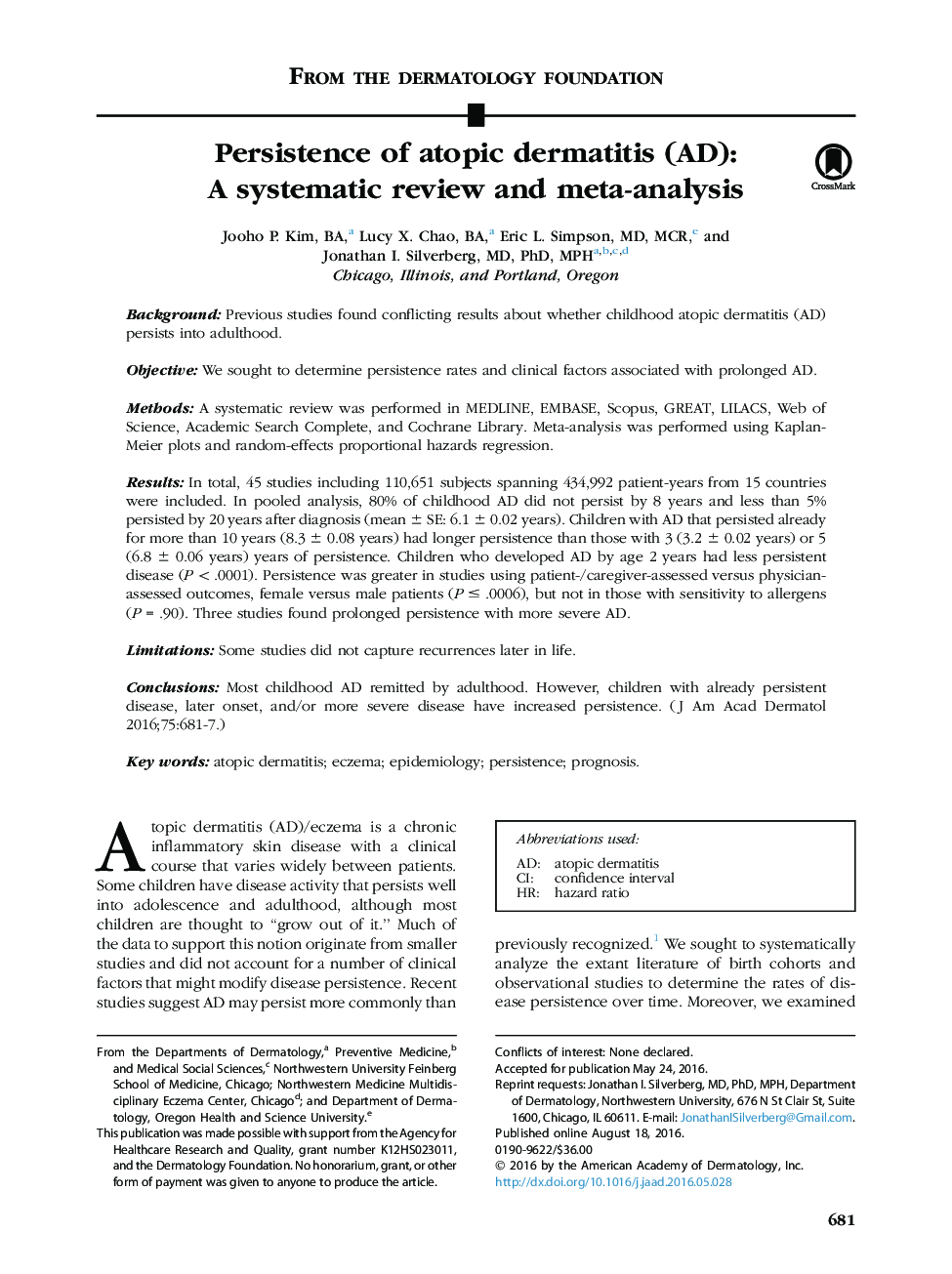| Article ID | Journal | Published Year | Pages | File Type |
|---|---|---|---|---|
| 5648582 | Journal of the American Academy of Dermatology | 2016 | 18 Pages |
BackgroundPrevious studies found conflicting results about whether childhood atopic dermatitis (AD) persists into adulthood.ObjectiveWe sought to determine persistence rates and clinical factors associated with prolonged AD.MethodsA systematic review was performed in MEDLINE, EMBASE, Scopus, GREAT, LILACS, Web of Science, Academic Search Complete, and Cochrane Library. Meta-analysis was performed using Kaplan-Meier plots and random-effects proportional hazards regression.ResultsIn total, 45 studies including 110,651 subjects spanning 434,992 patient-years from 15 countries were included. In pooled analysis, 80% of childhood AD did not persist by 8 years and less than 5% persisted by 20 years after diagnosis (mean ± SE: 6.1 ± 0.02 years). Children with AD that persisted already for more than 10 years (8.3 ± 0.08 years) had longer persistence than those with 3 (3.2 ± 0.02 years) or 5 (6.8 ± 0.06 years) years of persistence. Children who developed AD by age 2 years had less persistent disease (P < .0001). Persistence was greater in studies using patient-/caregiver-assessed versus physician-assessed outcomes, female versus male patients (P â¤Â .0006), but not in those with sensitivity to allergens (P = .90). Three studies found prolonged persistence with more severe AD.LimitationsSome studies did not capture recurrences later in life.ConclusionsMost childhood AD remitted by adulthood. However, children with already persistent disease, later onset, and/or more severe disease have increased persistence.
